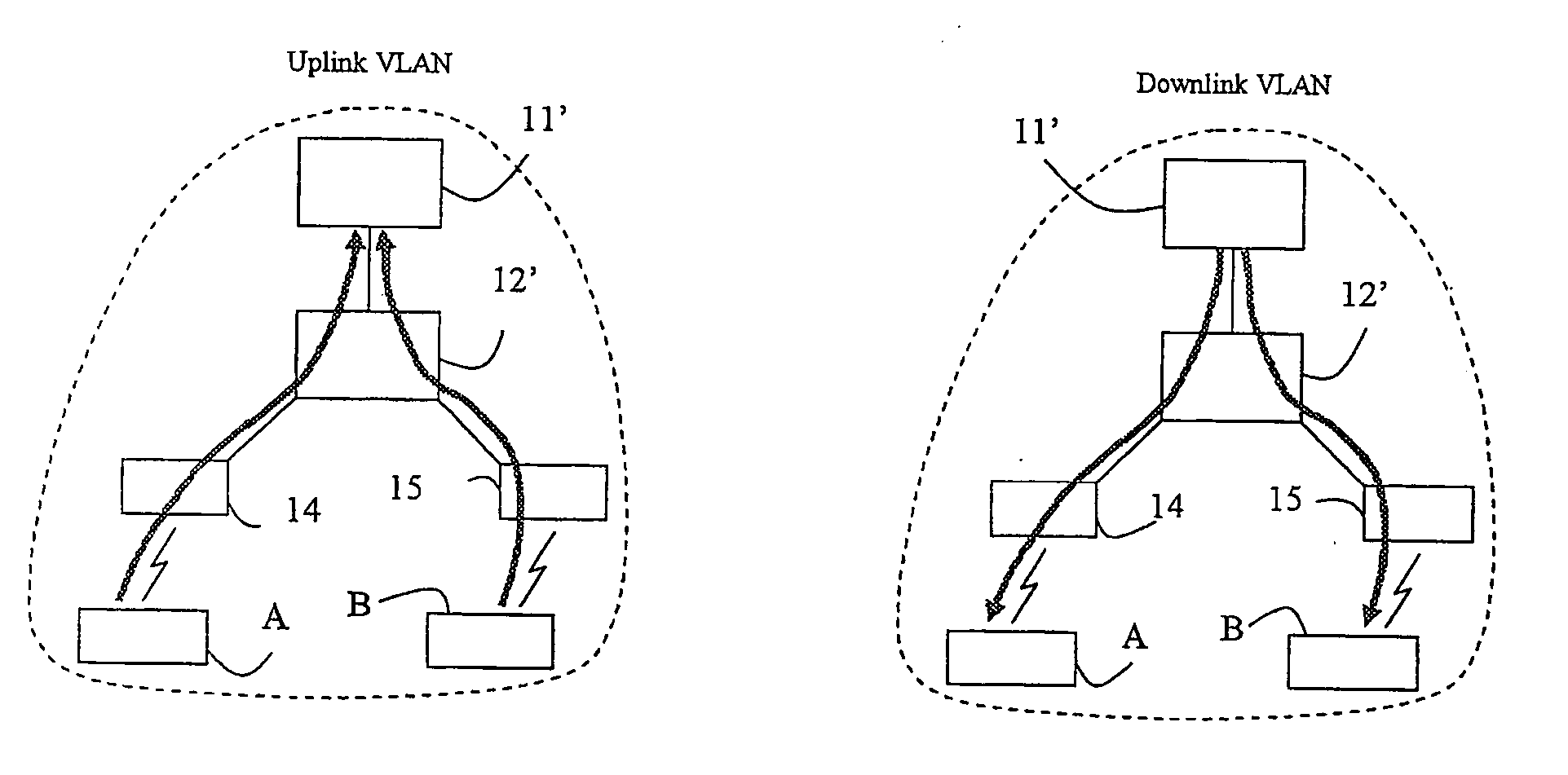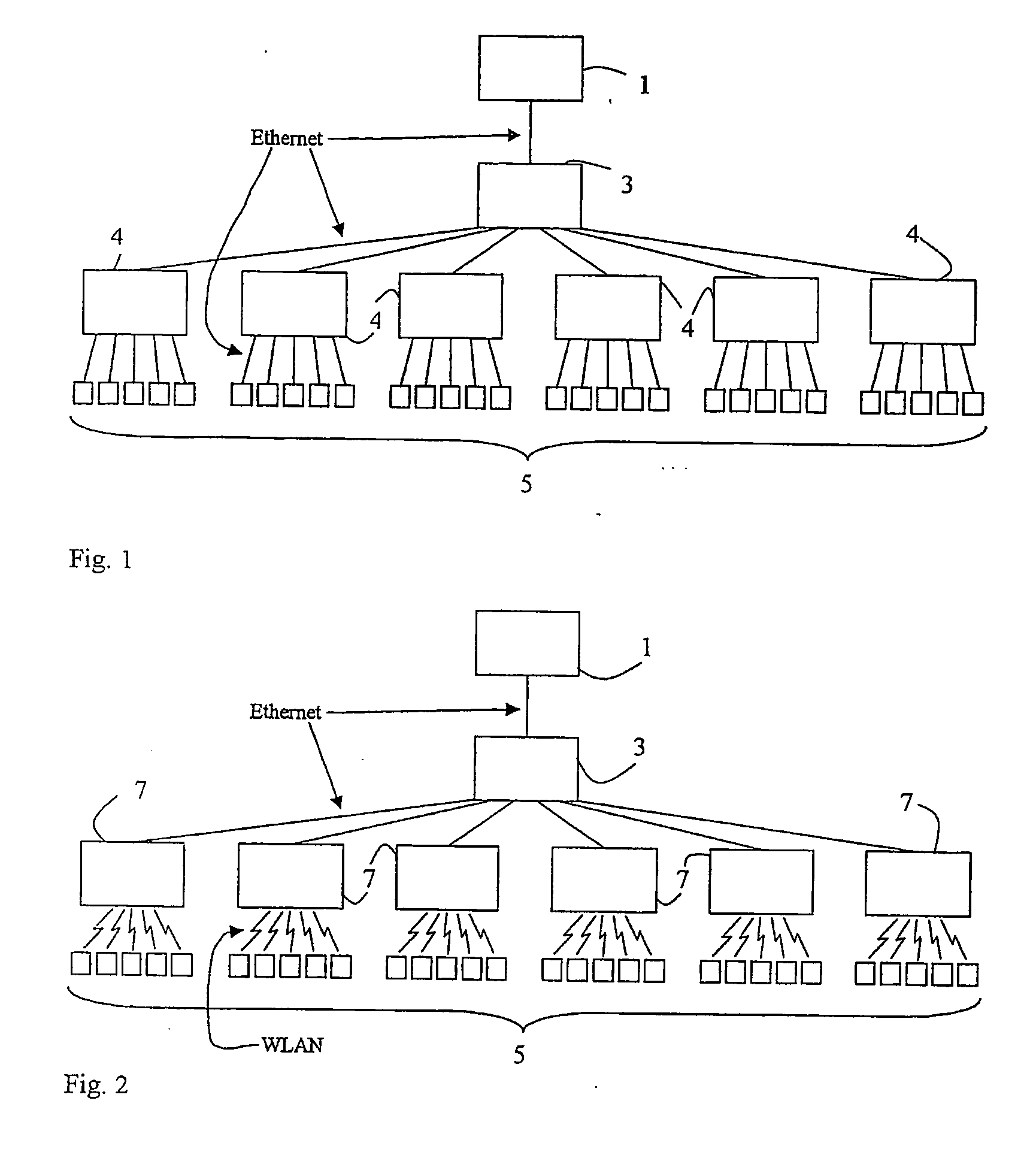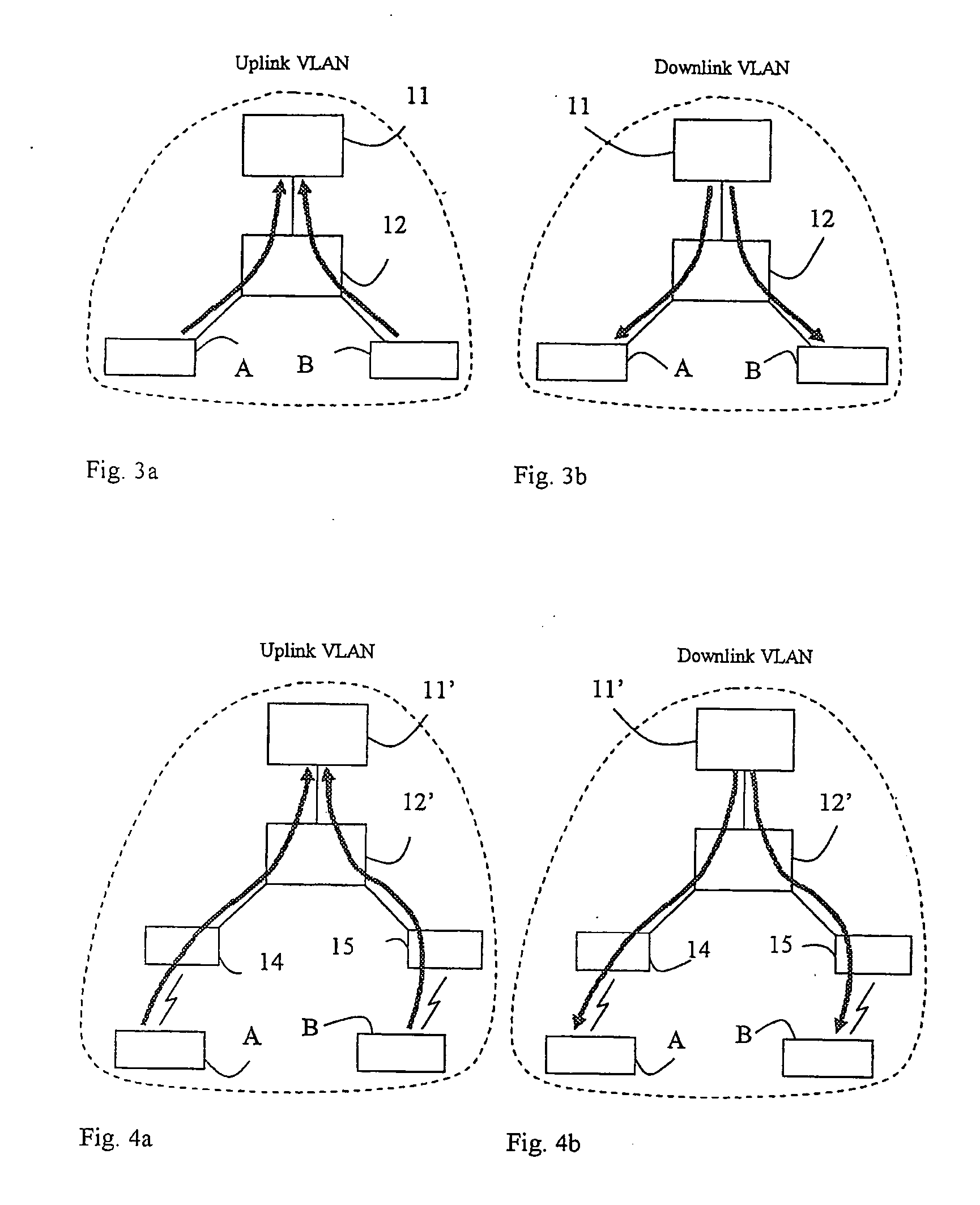Isolation of hosts connected to an access network
- Summary
- Abstract
- Description
- Claims
- Application Information
AI Technical Summary
Benefits of technology
Problems solved by technology
Method used
Image
Examples
first embodiment
LANS
[0066] In this variant only two asymmetric VLANs are used to isolate hosts from each other, irrespective of the number of hosts. This makes the VLAN configuration very simple and scalable.
[0067] Of the two asymmetric VLANs one is used for uplink (host to access router) traffic and one is used for downlink (access router to host) traffic. Conceptually the two VLANs can be depicted as in FIGS. 3a and 3b and FIGS. 4a and 4b. FIG. 3a shows schematically the uplink VLAN in a fixed access network. One access router 11 is shown connected to a switch 12. The switch 12 is connected to two hosts, A and B. The arrows show the allowed traffic paths. In this uplink VLAN only uplink traffic from the hosts A, B to the access router 11 is allowed. Furthermore the uplink VLAN is defined such that all traffic received in the switch 12 from the hosts A, B has to be forwarded up to the access router 11, i.e. direct host to host communication is prevented. FIG. 3b shows schematically the downlink V...
second embodiment
ic VLANs
Isolation of Hosts
[0106] In this solution variant the principle for isolation of hosts differ somewhat between WLAN access networks and fixed access networks.
Isolation of Hosts Connected to WLAN Access Networks
[0107] Instead of using a single asymmetric VLAN for uplink traffic, each AP has a dedicated VLAN for uplink traffic in this solution variant for WLAN access networks. The result is that the uplink traffic from all the hosts associated with a certain AP is carried through the VLAN dedicated to the AP. A single asymmetric VLAN is used for all downlink traffic. Having a dedicated VLAN for each AP should not cause any scaling problems, since it is foreseen that the number of APs in an access network will be far less than 4096. Conceptually the VLANs can be depicted as in FIGS. 8a, b and c. An access network comprising one access router 81, one switch 83 connected to the access router 81, a first and a second AP 85, 86 connected to the switch 83 and hosts A and B is s...
PUM
 Login to View More
Login to View More Abstract
Description
Claims
Application Information
 Login to View More
Login to View More - R&D
- Intellectual Property
- Life Sciences
- Materials
- Tech Scout
- Unparalleled Data Quality
- Higher Quality Content
- 60% Fewer Hallucinations
Browse by: Latest US Patents, China's latest patents, Technical Efficacy Thesaurus, Application Domain, Technology Topic, Popular Technical Reports.
© 2025 PatSnap. All rights reserved.Legal|Privacy policy|Modern Slavery Act Transparency Statement|Sitemap|About US| Contact US: help@patsnap.com



